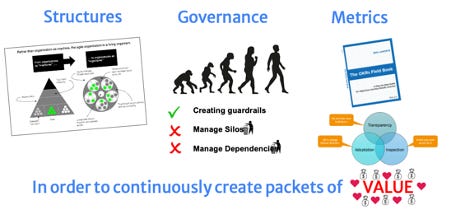Lean Portfolio Management : How do we optimise our workforce for the digital era?
Since its no longer efficiency and output. What is it?
So, what should we be optimizing for in the digital era?
The first step is to shift our focus to building new organizational structures that are better suited to the realities of the digital landscape. These should be flexible, adaptive, and designed to promote cross-functional collaboration.
We should also aim for light-touch governance. This doesn't mean less oversight, but rather smarter, more effective oversight. This approach involves empowering teams with a degree of autonomy, cutting down on bureaucracy, and encouraging a culture of transparency and accountability.
Furthermore, we need to rethink our metrics. While traditional measurements of performance are still important, we should also consider metrics that validate our strategic assumptions. In other words, we need to establish parameters that can confirm 'what needs to be true for this strategy to work'. This shift will allow us to track progress more accurately and make data-driven decisions that steer our organizations towards desired outcomes.
Ultimately, the goal of all these changes should be to create continuous value. In the digital age, this means more than just delivering products or services. It means enhancing user experiences, fostering innovation, promoting sustainability, and driving business growth in a way that is consistent, scalable, and sustainable.
The legacy approach to organizing work served us well in the past, but it's time we reconsider its relevance in a world that's rapidly evolving. By embracing new organizational structures, light-touch governance, and smarter metrics, we can navigate the complexities of the digital era and optimize for what truly matters – creating continuous value.




